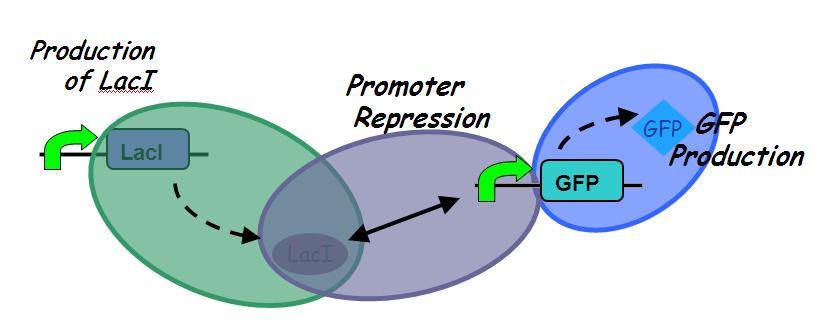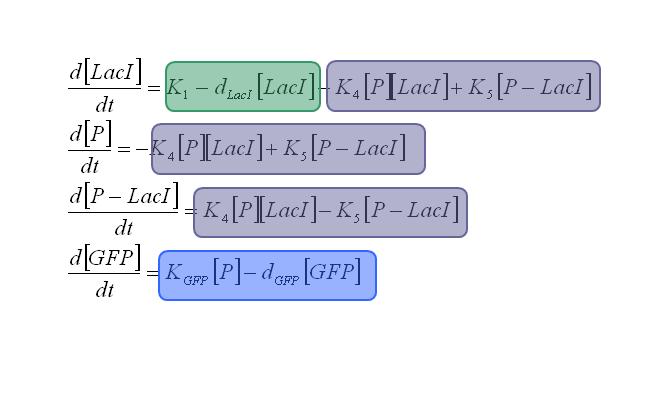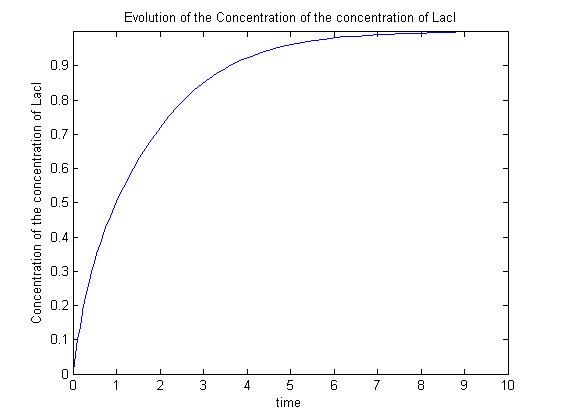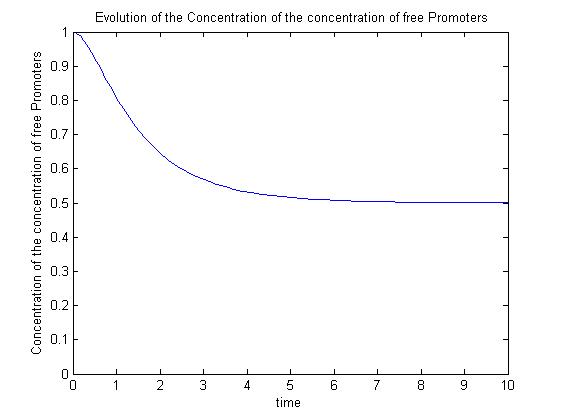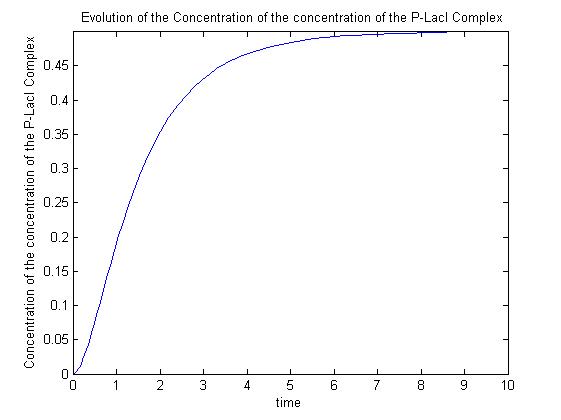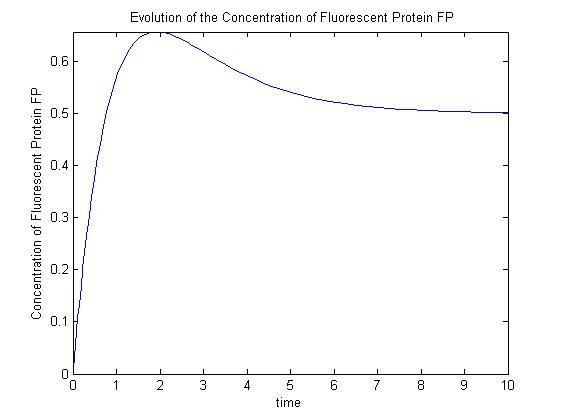Modelling the repression of the promoter before IPTG is introduced to the reaction
From 2008.igem.org
Prudencewong (Talk | contribs) |
Prudencewong (Talk | contribs) |
||
| Line 1: | Line 1: | ||
{{Imperial/StartPage2}} | {{Imperial/StartPage2}} | ||
| + | |||
| + | {{Imperial/Box1|Modelling the repression of the promoter before IPTG is introduced to the reaction | ||
| + | | | ||
IPTG is an inducer which binds to LacI. | IPTG is an inducer which binds to LacI. | ||
| Line 30: | Line 33: | ||
d<sub>GFP</sub>[GFP] is the basal rate of GFP. This is caused by the leakiness of the LacI-PLac complex when LacI does not repress the promoter completely. | d<sub>GFP</sub>[GFP] is the basal rate of GFP. This is caused by the leakiness of the LacI-PLac complex when LacI does not repress the promoter completely. | ||
| + | }} | ||
{{Imperial/EndPage|Growth_Curve|Motility}} | {{Imperial/EndPage|Growth_Curve|Motility}} | ||
Latest revision as of 18:22, 29 October 2008
|
|||||||
 "
"

